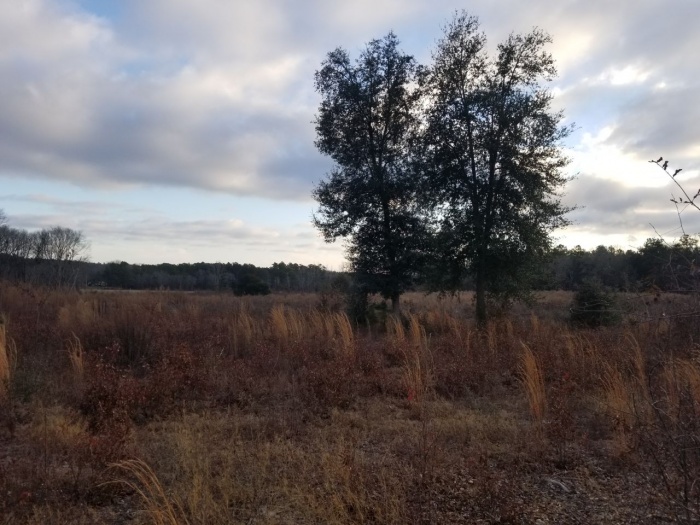Korean Tradition Merges With Italian Style
SEOUL, South Korea - From the outside, the home of Simone Carena and Jihye Shin looks like a traditional Korean house, or hanok, with its carved wooden door and pagoda-style roof. But the cherry red Ducati parked out front hints at something unexpected inside: a modern, loft-like space in an eye-catching shade of bamboo green.
“We wanted a strong natural color that would bring the outside in,” said Mr. Carena, 41, a founding partner of Motoelastico, an architecture firm with offices in Seoul and Turin, Italy. “Similar to the contrast you get from bamboo leaves against a backdrop of black tiles.”
The couple bought the property in the Samcheong-dong district in the spring of 2007, for 280,500,000 South Korean won, or about $300,000 at the time. “Everyone we knew here thought we were crazy to buy a hanok,” said Mr. Carena, who moved to Seoul from Italy in 2001, to teach at the International Design School for Advanced Studies, now part of Hongik University.
At first, so did his wife, a fashion designer who grew up in a hanok nearby and remembered what it was like to live in a house without modern amenities .
“Even my parents advised us against it,” said Ms. Shin, 31. “But I believed in Simone.”
It turned out to be the right decision. In recent years, the neighborhood has become one of Seoul’s most fashionable districts , Mr. Carena said, and the property has tripled in value.
Because the house was in “very bad condition,” he said, they decided to tear it down and build a new one instead of renovating, reusing the original roof tiles and foundation stones.
Mr. Carena and his partner at Motoelastico, Marco Bruno, designed a U-shaped structure, positioning it so that the opening - and the courtyard - would face west, offering views over the surrounding rooftops, toward the sunset. “And towards Italy,” he said.
The construction cost about $150,000 and was a constant battle, he said, because skilled traditional builders are hard to find - they work almost exclusively on large jobs, like museums or palaces, for organizations that can pay their high fees - and most of them tend to be wary of unconventional design solutions.
Soon after Mr. Carena and Ms. Shin moved into the two-story, 102-squaremeter home in April, they discovered leaks around the windows above the kitchen cabinets.
So Mr. Carena came up with an innovative solution: a “little microsystem,” as he put it, that uses gutters and plastic funnels to direct rainwater into flycatcher plants and a miniature herb garden.
The house is full of concealed storage and clever design ideas. A window cut into the courtyard floor and framed with mirrors brings light into the cellar room below . A tiny terrace set on top of the kitchen offers the couple and their 1-year-old son, Felice, a place to enjoy the view of Mount Inwang during the summer.
“This house is a puzzle of open views and hidden storage,’’ Mr. Carena said. Of course, all those open views make it easy for others to look in.
“One of our neighbors warned us one day that he saw us dancing in the kitchen,’’ Mr. Carena said. “We didn’t mind, but I built a small blind for his sake.’’
스마터리빙
more [ 건강]
[ 건강]이제 혈관 건강도 챙기자!
[현대해운]우리 눈에 보이지 않기 때문에 혈관 건강을 챙기는 것은 결코 쉽지 않은데요. 여러분은 혈관 건강을 유지하기 위해 어떤 노력을 하시나요?
 [ 건강]
[ 건강]내 몸이 건강해지는 과일궁합
 [ 라이프]
[ 라이프]벌레야 물럿거라! 천연 해충제 만들기
 [ 건강]
[ 건강]혈압 낮추는데 좋은 식품
[현대해운]혈관 건강은 주로 노화가 진행되면서 지켜야 할 문제라고 인식되어 왔습니다. 최근 생활 패턴과 식생활의 변화로 혈관의 노화 진행이 빨라지고
사람·사람들
more
[인터뷰] “미국 최고의 중학생으로 교육할 것”
LA 한인타운 내 최초의 한인 운영 수학·과학 중학교인 ‘윈저 아카데미’(WMSA, 4055 Wilshire Blvd. #400, LA)가 지…

KAF, 23개 비영리단체에 22만여불 지원
LA에 본부를 둔 커뮤니티 재단 KAF(Korean American Foundation·이사장 존 임)가 지난 5일 EK 갤러리에서 ‘2025…
“1세대 부모님 잘 케어하기”
한인 1세대 부모를 모시고 2세대 자녀를 키우고 있는 이른바 ‘샌드위치 세대’ 한인들을 위해 노부모를 잘 케어하기 위한 각종 정보를 총망라해 …
“이념 넘어 상호 존중, 한반도 평화의 기반”
장병우 LA 평통 신임회장이 평통의 역할을 강조하고 있다. [박상혁 기자]“이념보다 중요한 건 상호 존중입니다. 서로를 인정하는 데서 한반도 …
센터메디컬그룹 제4회 ‘이웃섬김’ 시니어 골프대회…
센터메디컬그룹(Center IPA)이 주최한 제4회‘이웃섬김’ 시니어 골프대회가 지난 3일 부에나팍의 로스 코요테스 컨트리클럽에서 130여 명…
많이 본 기사
- 비이민 비자 8만건 취소… 음주운전 사유 최다
- “저소득층 푸드스탬프 전액 지급하라”
- 고우림, ♥김연아 남편으로 산다는 것.. “내 얼굴이 곧 아내 얼굴”
- 인스타그램 광고 보고 샀는데… ‘가짜’ 봇물
- LAX 여객기 운항 강제 감축… 연말 ‘항공대란’ 불보듯
- 전지현, 유튜브 첫 출연서 오열 “사라진 언니 보고 싶다”
- 펠로시 “내년 불출마” 40여년 정치인생 은퇴
- ‘피소’ 박수홍, 식품업체에 ‘협박 무혐의’ 처분.. “5억 밀린 모델료 달랬더니 이미지 실추”
- 송가인 母 ‘예술가의 장한 어버이상’ 수상..겹경사 맞은 모녀
- 방탄소년단 지민 전 세계 팬들 뜻깊은 릴레이 선행 ‘희망 피어나길’
- 재무 건강검진
- 알츠하이머 질환 위험 낮추려면… “되도록 많이 걸어라”
- 캄보디아발 투자 사기 LA남성 2,800만불 배상
- 연방하원 40지구 내년 중간선거 최대 격전지 부상
- 은퇴자산의 숨겨진 도박
- 벤츠 회장 만나는 이재용… 배터리·반도체 ‘빅딜’ 시동
- 선거 참패에 트럼프 전략 트나… 백악관 “민생 집중해야”
- “주민 엑소더스 이유 있었네”… 가주 조세부담 전국 1위
- “트럼프가 하면 나도”… 푸틴, 핵경쟁 맞불
- 미, 희토류 공급망에 14억달러 투자… ‘탈중국’ 본격화
- “테슬라 머스크, 1조달러까지 보상받는다”
- 비만치료제 가격 인하 트럼프·제약사들 합의
- 황인범 없는 중원 조합 ‘고차방정식’… 두 달만에 또 푸는 홍명보
- 한인타운 불법낙서 LA 최악 수준
- 단풍 보러 갔다 돌담길에 반했네… 500년 된 한옥 마을 어디
- “재무장관 결과 낙관에도… 백악관 분위기는 암울”
- 주택매매 10건 중 1건… ‘큰 손 투자자’ 매입
- 사람 피로 그린 나치 낙서 독일서 무더기 발견 ‘충격’
- [조지 F. 윌 칼럼] 빌 게이츠의 ‘기후 변화’에 대한 입장 변화
- [주목받는 한인 기업] “친환경, 건강한 튀김 조리기기로 시장 석권할 것”
- [한국춘추] 펄먼 할아버지의 80년 인생 이야기
- 구글AI로 ‘시리’ 구동 애플, 자체 개발 지연
- 제약사들, ‘살빼는 약’ 업체 인수 혈투
- 로봇시대 ‘눈과 뇌’… 공간지능 모델로 피지컬AI 선도
- [왈가 왈부] 막말·고성에 ‘배치기’까지… 선진화법 무색한 ‘동물국감’
- 11·4 선거에 드러난 민심 직시해야
- LA 운전자들, 연간 85일 ‘극심한 교통지옥’
- ‘얌체’ 관행 끊고 평통의 품격 세워야
- [만화경] 굿바이 딕 체니
- ‘케데헌’ 후속편 나온다… “2029년 공개 목표”
- [새 영화] ‘독재정부 하의 민생·가부장제와 관료체제 비판’
- 대한항공, ‘베스트 어워즈’ 3개 부문 수상
- 양자보안칩·투명TV… ‘CES 최고혁신상’ 휩쓸었다
- 신지애, 토토 재팬 클래식 1R 단독 3위
- “관세 영향… 내년 물가도 높게 유지”
- “11월 11일은 ‘빼빼로데이’… 잊지마세요”
- 제조업 악화… 8개월째 위축 국면
- [전익환 프로의 골프교실] 백스윙
- [LA 오페라 하이라이트] 심금을 울리는 젊은 예술가들의 초상
- 역대 2번째로 뜨거웠다 산업화 전보다 1.42도↑
1/5지식톡

-
 테슬라 자동차 시트커버 장착
0
테슬라 자동차 시트커버 장착
0테슬라 시트커버, 사놓고 아직 못 씌우셨죠?장착이 생각보다 쉽지 않습니다.20년 경력 전문가에게 맡기세요 — 깔끔하고 딱 맞게 장착해드립니다!장착비용:앞좌석: $40뒷좌석: $60앞·뒷좌석 …
-
 식당용 부탄가스
0
식당용 부탄가스
0식당용 부탄가스 홀세일 합니다 로스앤젤레스 다운타운 픽업 가능 안녕 하세요?강아지 & 고양이 모든 애완동물 / 반려동물 식품 & 모든 애완동물/반려동물 관련 제품들 전문적으로 홀세일/취급하는 회사 입니다 100% …
-
 ACSL 국제 컴퓨터 과학 대회, …
0
ACSL 국제 컴퓨터 과학 대회, …
0웹사이트 : www.eduspot.co.kr 카카오톡 상담하기 : https://pf.kakao.com/_BEQWxb블로그 : https://blog.naver.com/eduspotmain안녕하세요, 에듀스팟입니다…
-
 바디프렌드 안마의자 창고 리퍼브 세…
0
바디프렌드 안마의자 창고 리퍼브 세…
0거의 새제품급 리퍼브 안마의자 대방출 한다고 합니다!8월 23일(토)…24일(일) 단 이틀!특가 판매가Famille: $500 ~ $1,000Falcon: $1,500 ~ $2,500픽업 & 배송직접 픽업 가능LA…
-
 바디프렌드 안마의자 창고 리퍼브 세…
0
바디프렌드 안마의자 창고 리퍼브 세…
0거의 새제품급 리퍼브 안마의자 대방출 한다고 합니다!8월 23일(토)…24일(일) 단 이틀!특가 판매가Famille: $500 ~ $1,000Falcon: $1,500 ~ $2,500픽업 & 배송직접 픽업 가능LA…
케이타운 1번가
오피니언

11·4 선거에 드러난 민심 직시해야

‘얌체’ 관행 끊고 평통의 품격 세워야
 조지 F·윌 워싱턴포스트 칼럼니스트
조지 F·윌 워싱턴포스트 칼럼니스트 [조지 F. 윌 칼럼] 빌 게이츠의 ‘기후 변화’에 대한 입장 변화
 손영아 문화 칼럼니스트·YASMA7 대표
손영아 문화 칼럼니스트·YASMA7 대표 [한국춘추] 펄먼 할아버지의 80년 인생 이야기
 김인자 시인·수필가
김인자 시인·수필가 [금요단상] “가을에 스며있는 지혜”
 김현수 / 서울경제 논설위원
김현수 / 서울경제 논설위원[만화경] 굿바이 딕 체니

[왈가 왈부] 막말·고성에 ‘배치기’까지… 선진화법 무색한 ‘동물국감’
 이상희 UC 리버사이드 교수 인류학
이상희 UC 리버사이드 교수 인류학 사소하지 않은 일상
 윤민혁 서울경제 실리콘밸리특파원
윤민혁 서울경제 실리콘밸리특파원 [실리콘밸리 View] MS 독점 벗어난 오픈AI, AWS 대형 계약
1/3지사별 뉴스

‘30대 사회주의자' 맘다니, 최초 무슬림 뉴욕시장 당선
초미의 관심을 모았던 뉴욕시장 본선거에서 조란 맘다니 민주당 후보가 승리하면서 역대 최초의 무슬림 뉴욕시장이 탄생했다. 초박빙 판세로 여겨졌던…
‘출구 못찾는’ 정부 셧다운…‘역대최장’ 36일 신기록

“트럼프 싫어”VA 정치 지각변동 …민주, 총선 압승
부지사·법무장관도 민주당 승리로 끝나민주, 주하원 13석 추가해 압도적 다수로 ‘반(反) 트럼프’ 기조를 내세운 민주당이 4일 치러진 버지니아…
“오바마 케어, 세액공제 종료시 보험료 26% 급등”

‘월가 황제’ 다이먼, 맘다니에 “디트로이트 시장에게 배우길”
‘월가의 황제’로 불리는 제이미 다이먼 JP모건체이스 회장이 사회주의자를 자처하는 조란 맘다니 미국 뉴욕시장 당선인을 향해 ‘디트로이트 시장에…
22기 SF*덴버 평통 111명 확정

오늘 하루 이 창 열지 않음 닫기 


















































.png)


댓글 안에 당신의 성숙함도 담아 주세요.
'오늘의 한마디'는 기사에 대하여 자신의 생각을 말하고 남의 생각을 들으며 서로 다양한 의견을 나누는 공간입니다. 그러나 간혹 불건전한 내용을 올리시는 분들이 계셔서 건전한 인터넷문화 정착을 위해 아래와 같은 운영원칙을 적용합니다.
자체 모니터링을 통해 아래에 해당하는 내용이 포함된 댓글이 발견되면 예고없이 삭제 조치를 하겠습니다.
불건전한 댓글을 올리거나, 이름에 비속어 및 상대방의 불쾌감을 주는 단어를 사용, 유명인 또는 특정 일반인을 사칭하는 경우 이용에 대한 차단 제재를 받을 수 있습니다. 차단될 경우, 일주일간 댓글을 달수 없게 됩니다.
명예훼손, 개인정보 유출, 욕설 등 법률에 위반되는 댓글은 관계 법령에 의거 민형사상 처벌을 받을 수 있으니 이용에 주의를 부탁드립니다.
Close
x